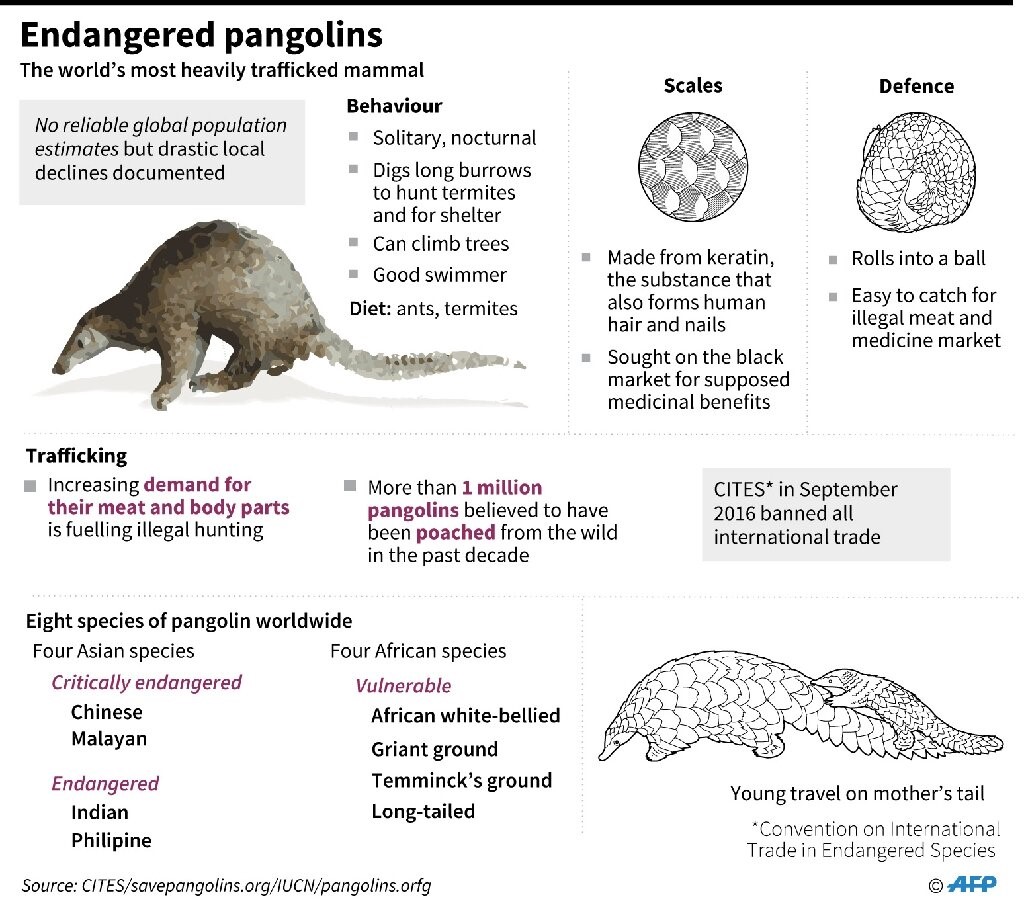Description

Copyright infringement not intended
Context: On the eve of World Pangolin Day observed on February 18, a not-for-profit organisation working on the international trade of animals and plants, has brought out a fact sheet reporting that 1,203 pangolins have been found in illegal wildlife trade in India from 2018 to 2022.
Details:
- India reports a significant number of pangolin trafficking incidents reflected by seizures across the country
- They are poached mainly for international markets in China and southeast Asia for their scales, which are used as an ingredient in traditional medicines.
- India is home to two species: the Indian Pangolin, found across the subcontinent; and the Chinese Pangolin, found across a larger area in south Asia. Bihar, West Bengal, and Assam see the presence of both.
- Both species are included under India’s Schedule I of the Wildlife Protection Act that could result in a jail term for those hunting animals listed here.
- An analysis of illegal pangolin trade in India by TRAFFIC in 2018 reported poaching of 6,000 pangolins between 2009 and 2017.
.jpeg)
About Pangolins:
- Pangolins, despite being listed in Schedule I of Wildlife (Protection) Act, 1972continue to be the world’s most trafficked mammal.
- The Indian pangolin is the largest among eight pangolin species.
- The nocturnal animal lives in burrows and feed on ants and termites.
- It practices Volvation, a defensive behavior in certain animals, in which the animal rolls its own body into a ball, presenting only the hardest parts of its integument, or its spines to predators.
Pangolins in India:
- Both Indian Pangolin (Manis crassicaudata) and the Chinese Pangolin (Manis pentadactyla) are found in India.
Habitat:
Indian Pangolin
- Widely distributed in India, except the arid region, high Himalayas and the North-East.
- The species is also found in Bangladesh, Pakistan, Nepal and Sri Lanka.
Chinese Pangolin
- Found in the Himalayan foothills in Eastern Nepal, Bhutan, Northern India, North-East Bangladesh and through Southern China.
Threats to Pangolins in India:
- Hunting and poachingfor use as a protein source and traditional medicine and international trade for its meat and scales in East and South East Asian countries, particularly China and Vietnam.

Protection Status:
IUCN Red List
- Indian Pangolin: Endangered
- Chinese Pangolin: Critically Endangered
- Both these species are listed under Schedule I, Part I of the Wildlife (Protection) Act, 1972

TRAFFIC:
- TRAFFIC is an organization that was established in 1976 by WWF and IUCN as a wildlife trade monitoring network to undertake data collection, analysis, and provision of recommendations to inform decision making on wildlife trade.
- For over 40 years TRAFFIC performed that function as a leader in wildlife trade research, as a joint program of WWF and IUCN.
- TRAFFIC became an independent non-profit organization in 2017, with WWF and IUCN sitting on its Board of Directors along with independent Board members.
- TRAFFIC is renowned globally for its expertise and influence in the wildlife trade and conservation arena, as a provider of objective and reliable information.
- Its expert staff implement innovative projects and create new tools to deliver the mission of protecting nature and supporting sustainable development, by resolving wildlife trade challenges.


https://epaper.thehindu.com/ccidist-ws/th/th_delhi/issues/25541/OPS/GLHAT18P8.1+GABAT1C39.1.html














